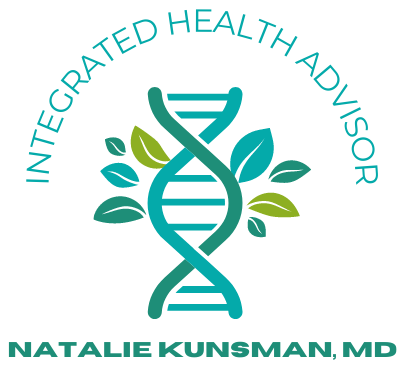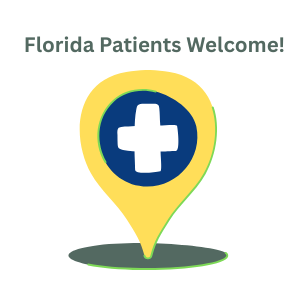Do women receive less healthcare than men?
I bring up this topic because I discussed signs to watch for blood clots on a social media platform, and it stirred up a firestorm of discussions that was not in the direction I expected. Surely, I thought we would discuss stories regarding clots. I expected personal testimony or relatable tales from family or friends who were dealing with this troublesome health issue. Instead, I had testimony after testimony about how women were ignored with these symptoms. One woman discussed that her “hormones” were blamed for her chest pain and shortness of breath. Another woman said that anxiety was blamed, and no testing was initiated. I find this disturbing, and I still find it shocking, even though I should not.
I will boast that I graduated from Medical College of Pennsylvania in the 90’s. The medical school in Philadelphia initially opened its doors as “Female Medical College of Pennsylvania” in 1850 (as the lore goes) in response to Thomas Jefferson School of Medicine and University of Pennsylvania (having a few names prior) not allowing women entrance. Two years prior the New England Female Medical College in Massachusetts was started but did not survive longer than 26 years due to financial constraints. As I digress, my medical college was renamed “Medical College of Pennsylvania” (MCP) and did not accept men to go co-ed until 1970. It has changed hands a few times, and now at Drexel University School of Medicine.
I have rambled regarding this history, because all throughout the archives of MCP were the brave women who really fought a culture of exclusion. Harvard professor Edward H. Clarke believed that women “seeking advanced education would develop monstrous brains and puny bodies” and “abnormally weak digestion.” Why does this sound so silly today? Nuns and nurses were freely accepted, but women in medical schools were not. Elizabeth Blackwell, MD certainly was a trailblazer and recalled that her instructors asked her to leave during discussions of the male reproductive system. Perhaps the lack of women in medicine bred a culture of men uncomfortable addressing women’s health concerns.
With the rich history at Medical College of Pennsylvania of women receiving medical degrees, we were directly and subtly reminded that a workup should be conducted with equal consideration and concern regardless of gender. Naturally, there are organ, hormone, and chemistry issues that may vary between the sexes, but the gravity of a serious condition needs equal attention. The education regarding the genders also needed to be equal. While this may be hard to grasp, gynecological exams for training purposes were being performed, without the patient’s consent, while they were under anesthesia for whichever surgery they were about to receive. Because of this barbaric and unethical practice, my school hired a team of nurse practitioners who walked us through these exams using themselves as test patients. This belabors the point that the female patient was considered equal in the eyes of our mentors and deserving of the utmost respect as a human being.
So where are we today? I carry a bias of being a woman myself, so I understand the medical issues of us women throughout our young, reproductive, and menopausal years. I am that old already to understand the late lifecycle issues we have! I clearly was trained to use every part of a patient’s history to be a puzzle piece that will eventually complete one puzzle. The patient is telling the story as best she can with her best interests at heart. Any time a clinician ignores or disbelieves the story is when mistakes will happen. This is plain and simple. I now must use glasses with the lens that female patients are experiencing and figure out why this continues to happen? It is 2022, for God’s sake.
In 2010 the NIH worked on a meta-analysis of older women >65. There are certainly limitations on this study, but controlling for as many variables as possible, women contact hospital systems as often as men. However, preventive services, the use of physician services, and hospital care are less in women. Women were hospitalized less and stayed in the hospital less days than male patients. Thomas Jefferson University reported that since 1984, death rate for women with heart attacks has been greater than men. While the Journal of American Heart Association found that women who receive the same treatment for their heart attacks as men, their survival rate is the same. This concludes that women’s danger lies in the response to the heart attacks, and not in the heart attacks themselves (fiercehealthcare.com Sept 2019). The other researched areas for gender differences lie in mental health diagnosis and treatments as well as pain management.
Despite being in this field for 28 years, I naively am surprised that healthcare professionals need education regarding these gender differences. We need to recognize this disparity exists before we can move forward and educate. We also need to conduct more research with women in the studies. I do recognize, however, that it is difficult to consider women in the reproductive years who may participate in a trial that could affect fertility or a developing fetus. We could easily, though, make sure there is equal representation in the older categories in such research protocols.
As I circle back to my female patients of all ages, I completely empathize with the problems you are experiencing in our current healthcare climate. The gender disparity is more persistent than I expected, and I have heard you all very loud and clear. There is the despondence of not being heard, but worse, is not receiving proper treatment, or God forbid, unnecessary mortality with fixable conditions. I have certainly found that women like to see female physicians. We resonate on the same plane. We understand our and our kids’ issues. We also have a very collaborative approach to medical problem solving. Typically, there is no dictatorial approach when two women put their heads together. At least, that’s the way I conduct my business. While it may be exhausting to fight and advocate for your medical problems as a woman, you may be stuck with this for the time-being. There is always safety in numbers, so keep your friends and family by your side when you are too weak to advocate for yourself. I will help as best as I can to help you all stand tall, be heard, and treated fairly.






Comments are closed.